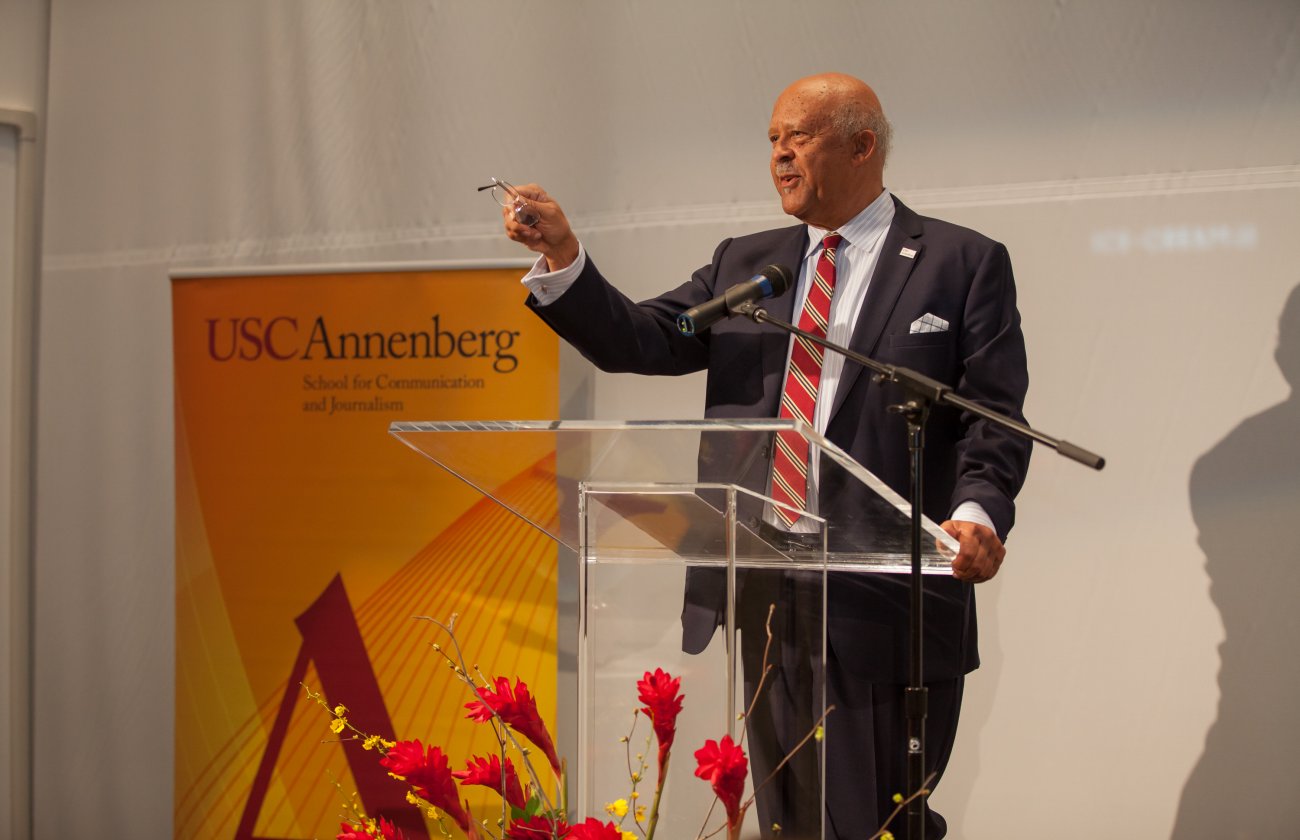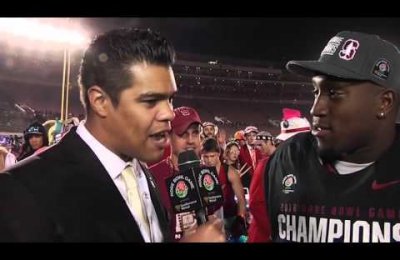By Michael Juliani
USC Annenberg Journalism Professor Joe Saltzman presented findings from his Image of the Journalist in Popular Culture project Tuesday at the semester’s fourth Journalism Forum.
Saltzman’s research on the image of the Washington, D.C. journalist in film and television resulted in a series of clips that runs more than eight hours long. At the forum, he showed roughly 12 minutes of it, with selections from movies and shows going back to 1932.
After playing the clips, Saltzman offered several conclusions about the image of the Washington journalist; for instance, the Washington journalist is usually portrayed as heroic when he or she is a main character in a film or show, but in anonymous depictions of journalists they often appear to be vile and inane, as in the stereotype of the intrusive tabloid journalist.
In short, Saltzman said, that image of the journalist in popular culture hasn’t changed much over time. His research included studies of Sumerian and Greek depictions of the press; even then, if the reporters were featured characters in stories and tales, they were seen as heroic.
“If the journalists function in the public interest they can do anything else [in the film or show] and they will still be heroic,” Saltzman said.
A discussion grew out of some faculty members’ questions about the image of female journalists, with Professor Erna Smith questioning the nuances of many female characters’ use of sex appeal in their reporting. Saltzman concluded that although many journalists, both male and female, are shown sleeping with their sources and editors, it’s often to serve the public’s interest or because the characters are genuinely in love.
In the 1930s and ‘40s—what Saltzman called “the golden age of the journalism film”— female reporters were often shown as incredibly bold and enterprising, scooping the men on the biggest stories. In the last five minutes of the movie, however, the women would decide to get married, adhering to social expectations of the time. Saltzman said it relieved female audiences to see strong, independent women fulfilling their “duty” as wives and mothers.
Saltzman also concluded that few films show how journalists really work. In this regard, he said, “All the President’s Men” is special for its sequence of Carl Bernstein and Bob Woodward digging through records for hours as the camera repeatedly panned to the clock.
Conversely, whenever a journalist decides to act out of personal or professional venality, he or she becomes a villain in the film or show, and it often doesn’t end well for the character.
Saltzman’s Washington journalist project will culminate in December, when he expects to finish his research.









